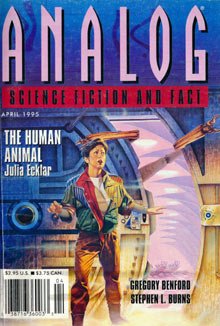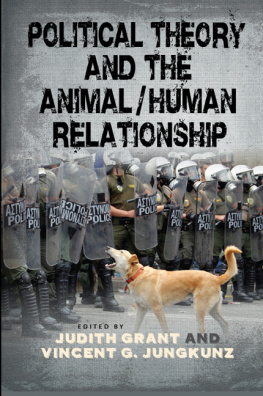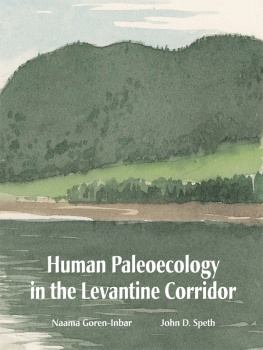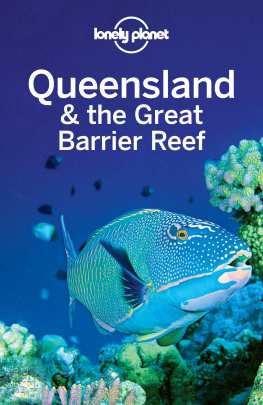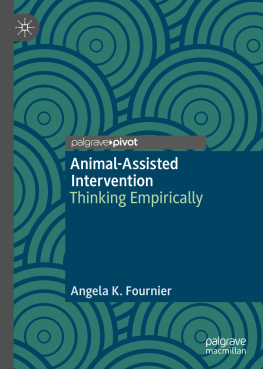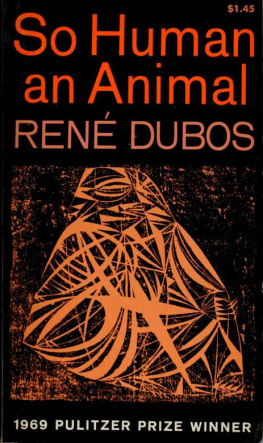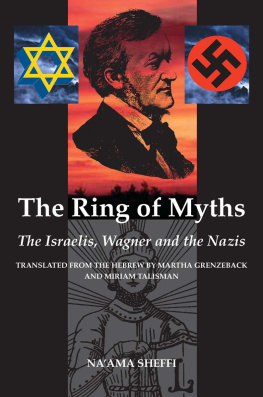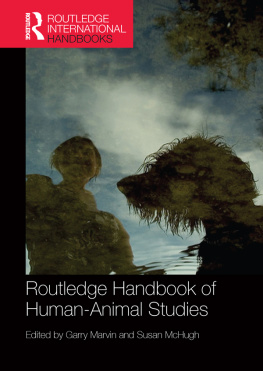Naama Harel - Beyond the Human-Animal Barrier
Here you can read online Naama Harel - Beyond the Human-Animal Barrier full text of the book (entire story) in english for free. Download pdf and epub, get meaning, cover and reviews about this ebook. year: 2020, publisher: University of Michigan Press, genre: Detective and thriller. Description of the work, (preface) as well as reviews are available. Best literature library LitArk.com created for fans of good reading and offers a wide selection of genres:
Romance novel
Science fiction
Adventure
Detective
Science
History
Home and family
Prose
Art
Politics
Computer
Non-fiction
Religion
Business
Children
Humor
Choose a favorite category and find really read worthwhile books. Enjoy immersion in the world of imagination, feel the emotions of the characters or learn something new for yourself, make an fascinating discovery.

- Book:Beyond the Human-Animal Barrier
- Author:
- Publisher:University of Michigan Press
- Genre:
- Year:2020
- Rating:5 / 5
- Favourites:Add to favourites
- Your mark:
- 100
- 1
- 2
- 3
- 4
- 5
Beyond the Human-Animal Barrier: summary, description and annotation
We offer to read an annotation, description, summary or preface (depends on what the author of the book "Beyond the Human-Animal Barrier" wrote himself). If you haven't found the necessary information about the book — write in the comments, we will try to find it.
Beyond the Human-Animal Barrier — read online for free the complete book (whole text) full work
Below is the text of the book, divided by pages. System saving the place of the last page read, allows you to conveniently read the book "Beyond the Human-Animal Barrier" online for free, without having to search again every time where you left off. Put a bookmark, and you can go to the page where you finished reading at any time.
Font size:
Interval:
Bookmark:
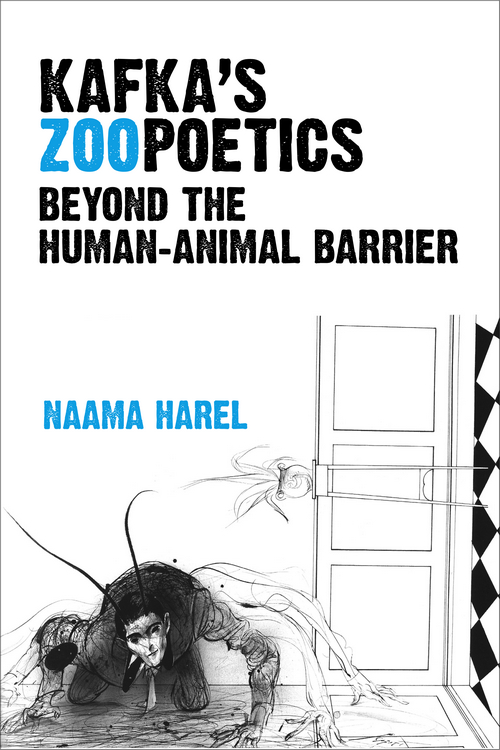
Naama Harel
University of Michigan Press
Ann Arbor
Copyright 2020 by Naama Harel
All rights reserved
This book may not be reproduced, in whole or in part, including illustrations, in any form (beyond that copying permitted by Sections 107 and 108 of the U.S. Copyright Law and except by reviewers for the public press), without written permission from the publisher.
Published in the United States of America by
the University of Michigan Press
Manufactured in the United States of America
Printed on acid-free paper
First published April 2020
A CIP catalog record for this book is available from the British Library.
ISBN 978-0-472-13179-2 (hardcover : alk. paper)
ISBN 978-0-472-12651-4 (ebook)
It is possible to read Kafkas animal stories for quite a while without realizing that they are not about human beings at all. When one encounters the name of the creaturemonkey, dog, moleone looks up in fright and realizes that one is already far away from the continent of man.
Walter Benjamin, Franz Kafka: On the Tenth Anniversary of His Death
Digital materials related to this title can be found on the Fulcrum platform via the following citable URL: https://doi.org/10.3998/mpub.11325807
A part of the research for this book was carried out for my doctoral dissertation at the University of Haifa. I am thankful to the German Academic Exchange Service (DAAD) for the research fellowship at the Institute for German and Dutch Philology at the Free University of Berlin, and the Bucerius Institute for Contemporary German History and Society at the University of Haifa for the financial support during my PhD studies. I would also like to express my gratitude to my dissertation adviser, Gabriel Zoran, for his valuable guidance. This book received funding from the Judith London Evans Directorship of the Tam Institute for Jewish Studies at Emory University and the Institute for Israel and Jewish Studies at Columbia University, and I thank them for their support. I am also grateful to the Humane Society of the United States for my research stay in their Summer Retreat Program for Animal/Humane/Environmental Studies in Shin Pond, Maine.
Some of the ideas in this book have been shared with several research groups, including the Wrzburg Summer School for Cultural and Literary Animal Studies, the Animal Studies Workshop at Emory University Center for Ethics, the Research Forum on the Human-Animal Bond at Tel Aviv University, and Columbia University Seminar on Human-Animal Studies. I am indebted to the participants for their feedback and observations. I extend special appreciation to Ariel Tsovel, whose insights nourished and inspired the early stages of my scholarly work, and to Gil Anidjar, who read the manuscript with scrupulous attention and provided precious comments. Further thanks are due to friends and colleagues, who advised and assisted me in the course of writing this book, among them Abdul-Rahim Al-Shaikh, Amir Banbaji, Simon Cook, Carrie Freeman, Yoav Kenny, Kevin Levin, Anat Pick, November Wanderin, and Felice Naomi Wonnenberg. Finally, I wish to acknowledge the gracious permission of Luis Scafati to use his artwork, which visually embodies Kafkas zoopoetics, for the cover of this book.
An early version of chapter 2 originally appeared as De-allegorizing Kafkas Ape: Two Animalistic Contexts, in Marc Lucht and Donna Yarri, eds., Kafkas Creatures: Animals, Hybrids, and Other Fantastic Beings (Lanham, MD: Rowman and Littlefield, 2010), 5366. An earlier version of chapter 4, entitled Investigation of a Dog, by a Dog: Between Anthropocentrism and Canine-centrism, was published in Margo DeMello, ed., Speaking for Animals: Animal Autobiographical Writing (New York: Routledge, 2012), 7187.
The following abbreviations are used in this book:
A America: The Missing Person. Trans. Mark Harman. New York: Schocken Books, 2011.
BON The Blue Octavo Notebooks. Trans. Ernst Kaiser and Eithne Wilkins. Cambridge: Exact Change, 1991.
CS The Complete Stories. Trans. Willa and Edwin Muir and Tania and James Stern. New York: Schocken Books, 1983.
D The Diaries of Franz Kafka, 191023. Trans. Joseph Kresh and Martin Greenberg. New York: Schocken Books, 1976.
E Die Erzhlungen. Frankfurt am Main: Fischer Taschenbuch Verlag, 2003.
KSS Kafkas Selected Stories: New Translations, Background and Context, Criticism. Trans. Stanley Corngold. New York: Norton, 2007.
LF Letters to Felice. Trans. James Stern and Elizabeth Duckworth. New York: Schocken Books, 1988.
LFBV Letter to the Father / Brief an den Vater: Bilingual Edition. Trans. Ernst Kaiser and Eithne Wilkins. New York: Schocken Books, 2015.
LFFE Letters to Friends, Family, and Editors. Trans. Richard and Clara Winston. New York: Schocken Books, 1977.
LM Letters to Milena. Trans. Philip Boehm. New York: Schocken Books, 1990.
M The Metamorphosis: Translation, Backgrounds and Contexts, Criticism. Trans. Stanley Corngold. New York: Norton, 1996.
PP Parables and Paradoxes: In German and English. Trans. Clement Greenberg, Ernst Kaiser and Eithne Wilkins, Willa and Edwin Muir, and Tania and James Stern. New York: Schocken Books, 1975.
T The Trial. Trans. Mike Mitchell. New York: Oxford University Press, 2009.
WPC Wedding Preparations in the Country, and Other Posthumous Prose Writings. Trans. Ernst Kaiser and Eithne Wilkins. London: Secker and Warburg, 1954.
Nonhuman protagonists are ubiquitous in Franz Kafkas oeuvre, from his early stories down to the very last one. Among them we find dogs, jackals, leopards, a tiger, a panther, a vulture, a cat, and a mouse; a few unspecified animals, such as a mole-like and a marten-like; mythological creatures, including sirens and a dragon; a kitten-lamb crossbreed; and several humanimal protagonists: a human transformed into vermin, a man who used to be a horse, and an ape turned into a human being. Nonhuman animals abound also in Kafkas personal writings. In a letter to his fiance, Felice Bauer, Kafka formulated his ultimate aim: I strive to know the entire human and animal community, to recognize their fundamental preferences, desires, and moral ideals, to reduce them to simple rules, and as quickly as possible to adopt these rules (LF, 545). His diaries and letters also reveal unique and enduring identifications with nonhuman animals. I am thriving among all the animals (LFFE, 150), he declares in a letter to his friends Max and Elsa Brod, while visiting his sister on a farm in the village of Zrau. But I truly suffered to the full the anguish of all animal nature (LFFE, 216), he writes to another friend; and in a letter to Milena Jesensk, his Czech translator and intimate friend, Kafka states: Fundamentally I was still only the animal, belonged still only in the forest (LM, 159). In his biography of Kafka, Pietro Citati notes:
He sensed an animal within him. Again and again, composing with the figures of his unconscious a bestiary just as immense as a medieval Page 2 one. He felt within him a beetle or a hibernating cockchafer; a mole that dug tunnels through the ground; a mouse that fled the moment man arrives; a slithering snake; a worm squashed by a human foot; a fluttering bat; a parasite insect that fed on our blood; a sylvan beast that lay desperate in a filthy ditch or in its den; a crow gray like ashes with atrophied wings; a dog that snarled and bared its teeth at anyone who disturbed him, or barked nervously running around a statue; a twofold animal with the body of a lamb, the head and claws of a cat.
Next pageFont size:
Interval:
Bookmark:
Similar books «Beyond the Human-Animal Barrier»
Look at similar books to Beyond the Human-Animal Barrier. We have selected literature similar in name and meaning in the hope of providing readers with more options to find new, interesting, not yet read works.
Discussion, reviews of the book Beyond the Human-Animal Barrier and just readers' own opinions. Leave your comments, write what you think about the work, its meaning or the main characters. Specify what exactly you liked and what you didn't like, and why you think so.

